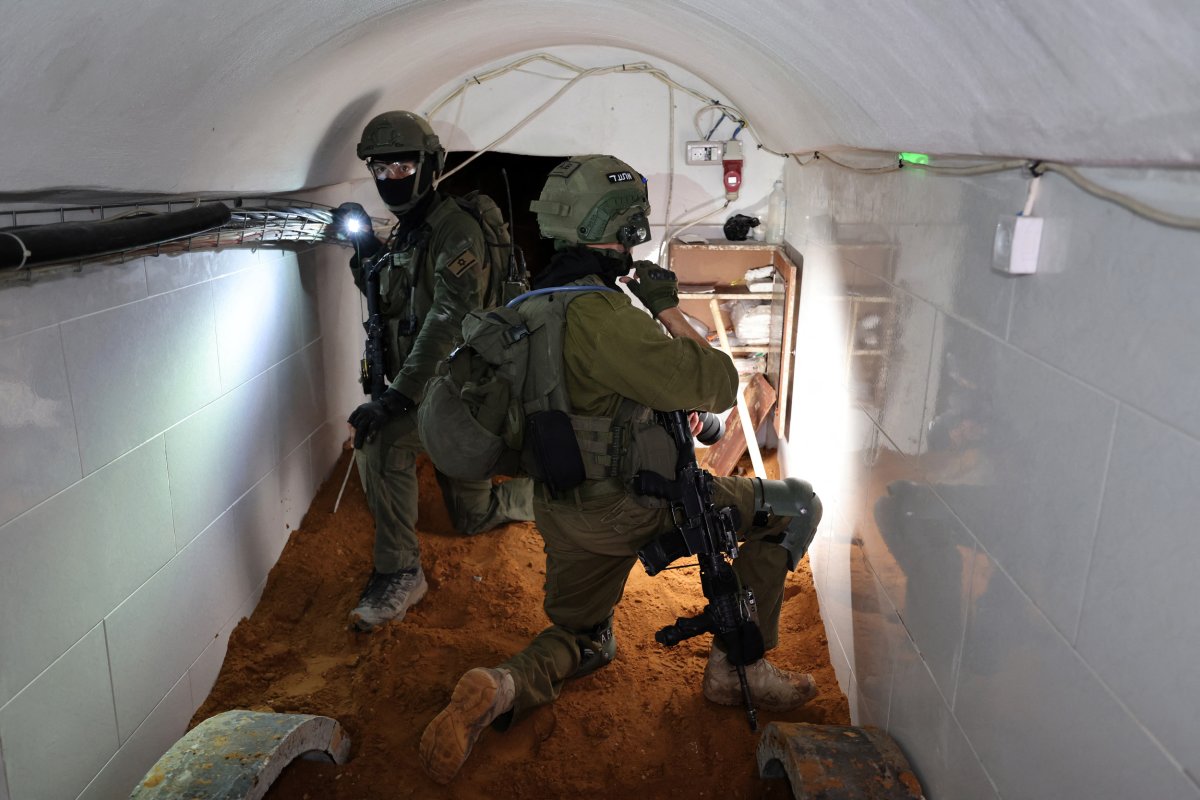Israel's war against Hamas in Gaza has inevitably drawn comparisons to other battles or wars, both modern and from the past. These comparisons are mostly used to make the case that Israel's operations in Gaza are the most destructive in history, or the deadliest in history.
Yet while the use of historical analogy may be tempting for armchair pundits, in the case of Israel's current war, the comparisons are often poorly cited, the data used inaccurate, and crucial context left out. Given the scale and context of an enemy purposely entrenched in densely populated urban areas, as well as the presence of tunnels, hostages, rockets, attackers that follow the laws of war while defenders purposely do not, and proximity between the frontlines and the home front, there is basically no historical comparison for this war.
Let's start with the context: After Hamas crossed into Israel on Oct. 7, murdering over 1,200 Israelis in brutal ways that included mutilation and sexual assaults as well as taking over 200 hostages back into Gaza, Israel formally declared a defensive war against Hamas in Gaza in accordance with international law and the United Nations charter. Since, the IDF estimates it has killed 10,000 Hamas operatives, while Hamas claims that the total number of casualties is 24,000 (Hamas does not distinguish civilian deaths from militant deaths).
The truth is that Israel has painstakingly followed the laws of armed conflict and implemented many steps to prevent civilian casualties, despite enormous challenges. Israel's military faced over 30,000 Hamas militants in over 400 miles of defensive and offensive tunnels embedded in and under civilian areas, populations and protected sites such as hospitals, mosques, schools, and United Nations facilities across multiple cities.

Hamas' strategy is to use Palestinian civilians as human shields, because their goal is not to defeat Israel's military or to hold terrain; it is far more sinister and medieval—to use the death and suffering of Palestinian civilians to rally international support to their cause and demand that Israel halt their war.
Meanwhile, Israel's war aims were more traditional: returning Israeli hostages, dismantling Hamas military capability, and securing their border to prevent another October 7 attack.
These goals required not one major urban battle but multiple. While Gaza is not the densest populated urban region on earth as many claim, it features over 20 densely-populated cities. And while the Israeli Defense Forces are engaged in fighting, Hamas has continued to launch over 12,000 rockets on nearly every day of the war from the combat area toward civilian-populated areas in Israel, literally over the heads of the attacking IDF, who it bears mentioning are fighting just a few miles from their homeland and the homes of their soldiers.
Put all of this together, this war is simply without precedent. Certainly, it cannot be compared to the host of other wars that have been used for comparison sake to paint Israel in an unflattering light.
Some have compared Israel to Russia, yet there is simply no comparison. In the 2022 Battle of Mariupol, estimates of the number of civilians killed range up to 25,000, including 600 civilians killed in a single bombing of a theater with the word "children" written in giant letters around it. This is the same Russia that killed over 50,000 civilians (5 percent) of a 1.1 million pre-war population of Chechnya in 20 months of combat in the late 1990s in multiple major urban battles such as Grozny.
Or take Syria. Over 300,00 civilians have been killed in the Syrian war; an average of 84 civilians were killed every day from 2013 to 2023.
Others have compared the battles in Gaza to World War II air campaigns like the UK bombing of the German city of Dresden in 1945 that killed an estimated 25,000 civilians. But here, too, memory is selective: These same people discount air campaign cases such as the U.S. firebombing of Tokyo the same year that killed over 300,000 civilians, to include 80,000 to 100,000 civilians in a single night, causing more death and destruction than Dresden, Hiroshima, or Nagaski.
A battle that does bear a resemblance to Israel's war against Hamas is the 1945 Battle of Manila—the largest urban struggle of World War II, with more civilian casualties incurred than even the Battle of Stalingrad. The city had a population of 1.1 million residents as well as over 1,000 American prisoners of war being held in the city. It took the U.S. military 35,000 forces and a whole month to defeat 17,000 Japanese Navy defenders in and around the city.
Like in Gaza, the defenders used the city's sewer and tunnel systems for offensive and defensive purposes. And there were over 100,000 civilian deaths from the battle—one of the major factors of the 1949 Geneva Conventions, which stipulated the laws of armed conflict to further protect civilians and prevent civilian deaths.
Most experts compare the Gaza war to the recent urban battles against ISIS involving United States forces, including the 2016-17 Battle of Mosul. In that battle, over 100,000 Iraqi Security Forces, backed by American advisors and U.S. and coalition air power, took nine months to clear a city of 3,000 to 5,000 lightly armed ISIS fighters. The battle resulted in over 10,000 civilian deaths, 138,000 houses destroyed or damaged and 58,000 damaged with 40,000 homes destroyed outright in just Western Mosul. Iraqi Security Forces suffered 10,000 casualties. There were very limited, shallow, house-to-house tunnels, but no tunnel networks, no hostages, no rockets.
In April of 2004, the U.S. military was directed to arrest the perpetrators of an attack that caused the death of four American civilians and deny insurgents sanctuary in the densely populated city of Fallujah, Iraq, a city of 300,000 residents. The battle that ensued was later dubbed the First Battle of Fallujah. Because of international condemnation and political instability fueled by international media over a perceived indiscriminate use of force and civilian casualties, the U.S. forces were ordered by the U.S. Central Command Commander to stop the battle six days into it.
Estimates of the total civilian deaths from the battle range from 220 to 600. Six months later, in November 2004, the U.S. military initiated the Second Battle of Fallujah. It took 13,000-15,000 U.S., UK, and Iraqi forces six weeks to clear the city of 3,000 insurgents. There were some 800 civilian deaths even though the city's residents had largely evacuated before the battle. Over sixty percent the city's buildings were damaged or destroyed. But there, too, the enemy defenders did not have access to tunnels.
Ultimately, comparisons with both past and modern cases highlight the fact that there is almost no way to defeat an entrenched enemy defender without destruction, even while implementing all feasible precautions and limits on the use of force required by the laws of war.
Let's put away our military history books. There is no comparison to what Israel has faced in Gaza—certainly none by which Israel comes out looking the worse.
John Spencer is chair of urban warfare studies at the Modern War Institute (MWI) at West Point, codirector of MWI's Urban Warfare Project and host of the "Urban Warfare Project Podcast." He served for 25 years as an infantry soldier, which included two combat tours in Iraq. He is the author of the book Connected Soldiers: Life, Leadership, and Social Connection in Modern War and co-author of Understanding Urban Warfare.
The views expressed in this article are the writer's own.
Uncommon Knowledge
Newsweek is committed to challenging conventional wisdom and finding connections in the search for common ground.
Newsweek is committed to challenging conventional wisdom and finding connections in the search for common ground.
About the writer
To read how Newsweek uses AI as a newsroom tool, Click here.








